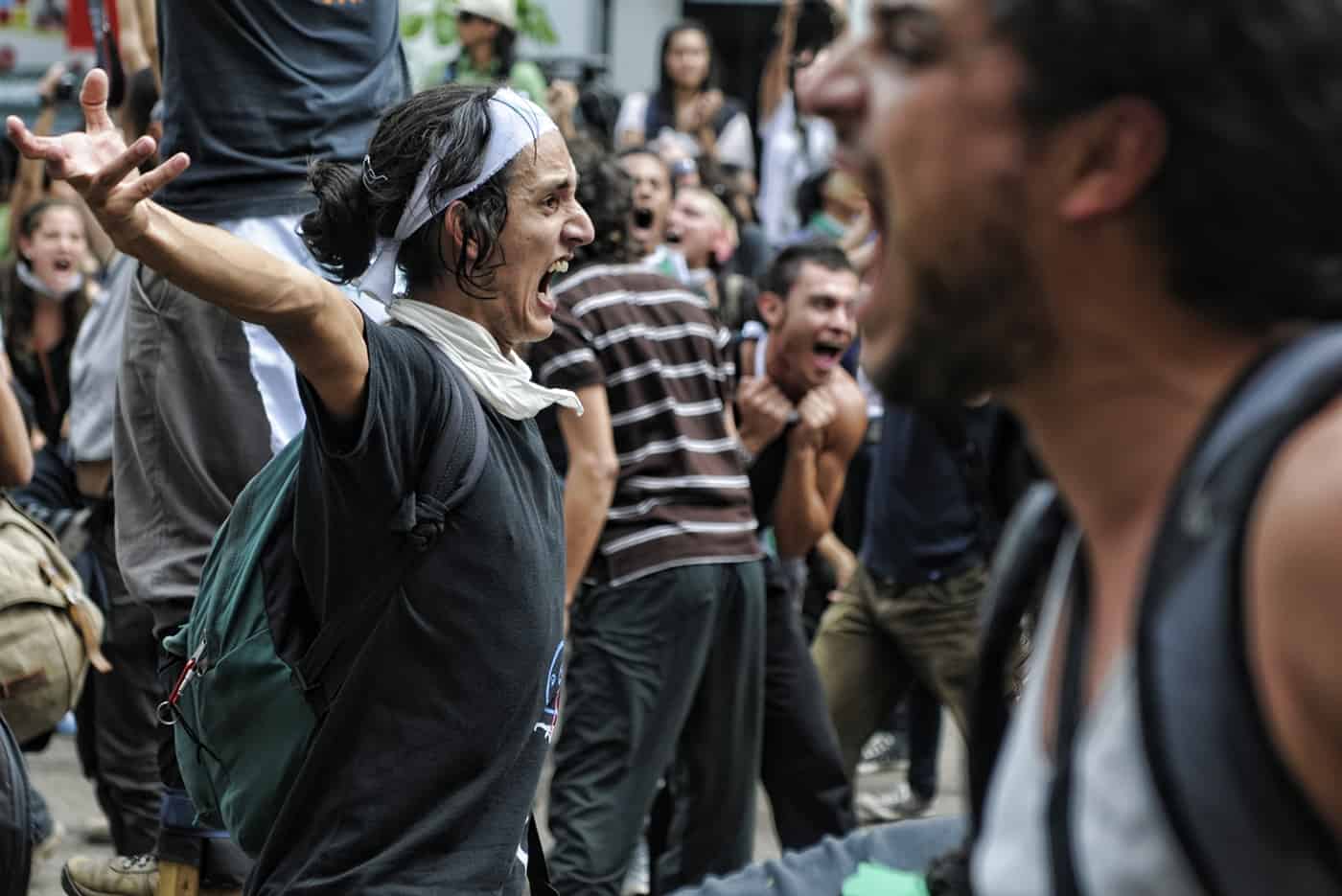An estimated 1,200 demonstrators marched in the streets of San José Thursday equipped with banners, megaphones and plenty of clever chants. Different groups from around the country came together for the all-day event, which ended peacefully.
“I am here because of the indignation I feel,” said Enrique Corriols, a student organizer from the National University. “It’s our obligation to take to the streets and to continue believing in what this movement stands for.”
Starting from opposite ends of San José, two groups began the march at 9 a.m. The first group met in Parque de la Merced on the city’s west side, and the second group at the University of Costa Rica, in San Pedro to the east. The two groups united at noon in front of the Costa Rican Social Security System’s (Caja) main office building, the site of a violent protest last week.
Also attending the march were lawmakers Carmen Granados and Claudio Monge, who were both injured during last week’s protest.
In an effort to ensure a peaceful demonstration, nearly 150 women police officers monitored the march, a tactic that Public Security Minister Mario Zamora said has been effective in the past.
According to student leaders and the event’s Facebook page, the march had three objectives: a change in administration at the Caja and condemnation of both police actions at last week’s protest and the passage of the “Ley Mordaza,” or “gag law.”
Demands for the Caja
Last week, several hundred protesters converged on the Caja armed with a document containing 10 demands for the organization’s administration. The protests ended in violence after the administration’s refusal to accept the document, which included a provision asking for the resignation of the Caja’s executive president.
“What we want is to defend the basis of Social Security,” protester Randall Granados said. “We want everyone to get attention even if they don’t have insurance.”
On Thursday, administration officials accepted the document, and a response to the demands is expected within the next 10 days.
Police action against protestors
On Nov. 8, police were ordered to clear the streets of protesters on Avenida 2. The violence that ensued led to the arrest of 36 demonstrators and the injury of two lawmakers who appeared on the scene in defense of the protesters.
Thursday’s protest did not end in violence, but plenty of demonstrators claimed one of their reasons for attending was to show their discontent with police actions from the previous week.
“It’s clear that what happened was part of the president’s strategy to militarize the administration,” Corriols said, echoing similar beliefs of other attendees. “Police are dressed up as soldiers and are taking an obvious stance against the people. We need to present a clear message that we are afraid of the actions that this administration is taking.”
Gag Law
On Nov. 6, the administration of President Laura Chinchilla published the text to the Ley de Delitos Informáticos, or Information Crimes Law. The law has been popularly called Ley Mordaza due to its limitations on electronic press investigation.
The controversial law was at the forefront of many of the protesters’ minds, some of who came wearing gags with “Ley Mordaza” scribbled across the front. The march stopped several times for the performance of a dance featuring gagged demonstrators.
“There has been a lot of corruption, and we want to hear about it,” said University of Costa Rica student Cindy Roldán. “These investigations have been affected by this law and the media need to be heard.”







